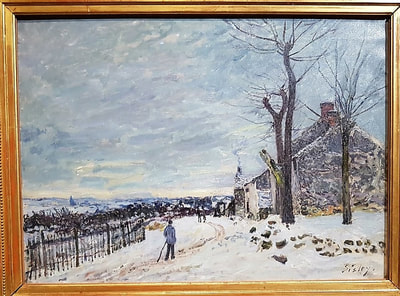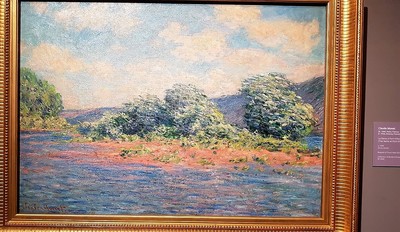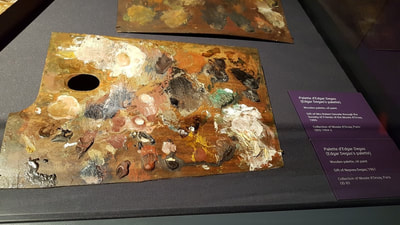 Finally, we had arrived in Singapore, the part of the trip we had looked forward to most. After checking into our hotel, we decided to do a little exploring of the area. I don't know what other people are like but we always like to get our bearing's before setting off further afield. Our hotel was connected to a shopping Mall and as we emerged, the heavens opened. This time we were prepared and had our cagoules with us. We sheltered in a doorway and put these on. Eventually, the heavy rain eased but did not look like ending completely. Because of this we decided to find an inside venue to explore. We always try to find an art gallery in a new place and as the National Gallery of Singapore was close by, this seemed an ideal place to shelter. We arrived not knowing what to expect and soon realised that this was a lucky choice. An exhibition showing the impressionists called a Century of Light was just finishing and because of this, entry was free. Being one of our favourite periods in art, we were soon enthralled by the paintings. It was good to see so many other people spending time taking in these masterpieces; there were even a couple of people sat sketching With over 60 paintings we were spoilt for choice and spent a long time in the first gallery. The exhibition was set out chronologically showing how the style evolved and how the individual artists influenced this. The exhibition, which was more than three years in the making, is divided into six sections based on colours. It begins with black, including pieces such as Manet's striking Moonlight Over The Port Of Boulogne (1869). It then moves through clear tones, whites, greens and blues, scientific colour theory and winds up with pinks and purples. While visitors will doubtless flock to Monet's water lilies and Renoir's full-figured women, Mr Perrin hopes they will also pay attention to the lesser-known figures that were also key to the movement. Among these are Paul Signac, a Neo-Impressionist who helped to develop the Pointillist style of using dots of colour to form an image; portrait and still-life artist Henri Fantin-Latour; and Berthe Morisot, one of three "grandes dames" of Impressionism, notable in her choice to highlight domestic scenes featuring women and children. Certain things like, the early use of black surprised me, as well as how the use of colour on snow became popular. It was also interesting to see how the changing light had been captured in the cathedral pictures by Monet as well as seeing the palettes used by these great artists. Such things as these are always of interest. Half way around there was an areas where the public could make their own impressionist picture. To help there were blocks that you could use to set the scene. As you moved around the table you could pick which ones to use and then add your own drawing on top. These were then put up on show. This was an excellent way to relax before continuing and both Sue and I had a go. You could say we have both now exhibited in this prestigious gallery!  As we wandered around the next room admiring the paintings we kept bumping into one couple. Eventually we started to chat to them and had several interesting conversations about art and this exhibition. It's good that art can break down barriers and shared experiences can be enjoyed by different people. it turned out that the lady was teaching art in a local school and they had an artist in residence at the moment. Her perspective on the work was interesting as was her husbands. My knowledge about impressionism and the work we had seen in other galleries led interested them and we had a good chat. If we had come to the gallery two days later the show would have finished so the rain did us a great favour this time.
0 Comments
Leave a Reply. |
AuthorPhilip Westcott Categories |










 RSS Feed
RSS Feed